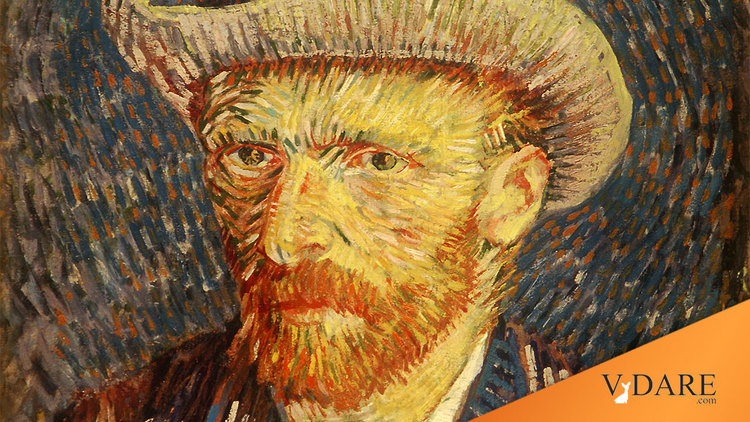
Fame And The 70-Year Rule
By Steve Sailer
09/30/2022
In high school, my most cultured teacher pointed out that while everybody likes the Romantic notion of an overlooked artist who dies in obscurity being discovered after his death, almost all the cases of that, such as Van Gogh, are people who died young. If Van Gogh had lived his three score and ten years, he would have been world famous for his last couple of decades.
Another aspect of this is that artists who were famously rediscovered posthumously weren’t necessarily unknown in their own lifetime.
There has been an immense number of artists who were famous during their own lifetimes but are now forgotten. Every decade a few of the forgotten are rediscovered, but it’s not like they were unknown at age 40 or whenever.
Consider J.S. Bach (1685-1750), who was famously revived by Felix Mendelssohn with a performance of Bach’s St. Matthew Passion in 1829. In his own lifetime, Bach was the top man in Lutheran church music. He was well-known and respected by everybody whose opinion Bach cared about. On the other hand, the Fame Machine wasn’t in full gear yet (perhaps Beethoven was the first really famous composer).
And, crucially, musical style underwent a huge change right around Bach’s death from his polyphonic baroque style to his sons’ symphonic style. But J.S. Bach wasn’t forgotten by the musical elite: Haydn, Mozart, and Beethoven all studied him. The wealthy Mendelssohn family remained devoted to his memory.
The Dutch painter Vermeer (1632-1675) died at 43 about the time the Dutch Golden Age collapsed amidst French aggression. He was a slow, careful worker so he’d mostly achieved some degree of regional fame before dying young. Vermeer was widely rediscovered almost 200 years after his death, but Paul Johnson, who considers Vermeer the best painter ever, points out that there was, in the meantime, always a thin chain of a handful of connoisseurs who passed on awareness of Vermeer’s awesomeness.
I now realize that you can quantify these questions of fame going back to 1800 using Google’s Ngram viewer of mentions of text strings in books. For example, consider the English poet Gerard Manley Hopkins (1844-1889):
Glory be to God for dappled things –
For skies of couple-colour as a brinded cow;
For rose-moles all in stipple upon trout that swim;
Fresh-firecoal chestnut-falls; finches’ wings;
Landscape plotted and pieced — fold, fallow, and plough;
And áll trádes, their gear and tackle and trim.All things counter, original, spare, strange;
Whatever is fickle, freckled (who knows how?)
With swift, slow; sweet, sour; adazzle, dim;
He fathers-forth whose beauty is past change:
Praise him.
He died in complete obscurity. His name achieved some tiny degree of renown in the decades after his death, and finally began to achieve fame about 80 years after his birth, which has lasted consistently into the 21st century.

I was going to do some more of these for you, but Ngram appears to have suddenly stopped working.
Anyway, who else should I graph when Ngram starts up again?
